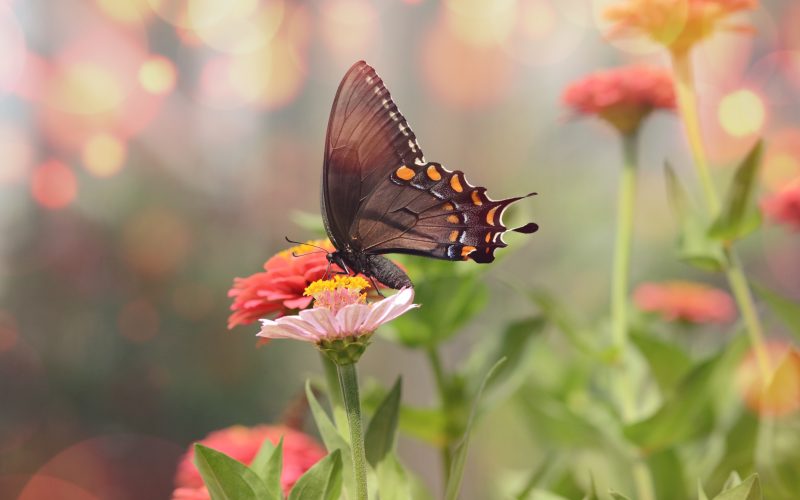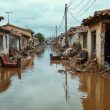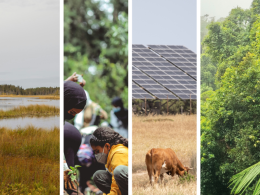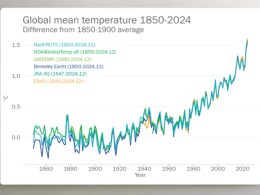Butterfly populations across the United States have plummeted by 22% since 2000, with climate change, habitat destruction, and widespread pesticide use driving the decline, according to a major new study published in Science.
The research, the first comprehensive nationwide analysis of butterfly abundance, found that numbers have been falling at an average rate of 1.3% per year over the past two decades. Of the 114 species in decline, many have lost more than 40% of their populations, while only nine species showed an increase.
The findings are based on an unprecedented dataset compiled from 76,957 surveys across 35 monitoring programmes, covering a total of 12.6 million butterflies. Scientists warn that the situation is far worse than previously understood, with 96 species so rare they did not appear in the data at all, and another 212 too scarce to assess long-term trends.
Among the species in freefall is the monarch butterfly, once a familiar sight across North America. An annual survey last month recorded fewer than 10,000 monarchs, close to an all-time low, compared to 1.2 million in 1997.
“This is catastrophic and saddening,” said David Wagner, an entomologist at the University of Connecticut, who was not involved in the study. “Over just 30 or 40 years, we are talking about losing half of all butterflies and other insect life across an entire continent.”
Some of the best-known butterfly species have seen alarming drops in their populations. The red admiral, known for its distinctive markings and tendency to land on people, has declined by 44%. The American lady butterfly, recognisable by the large eyespots on its hindwings, has seen a 58% decline. Even the white cabbage butterfly, an invasive species known for its resilience and ability to thrive in human-altered landscapes, has lost 50% of its population.
Haddad, a specialist in rare butterflies, has personally witnessed the crisis. In recent years, he has seen only two St. Francis Satyr butterflies—an endangered species that lives exclusively on a military base in North Carolina. “It could be extinct,” he warned.
The steepest declines have been recorded in the southwestern states—Arizona, New Mexico, Texas, and Oklahoma—where butterfly numbers have fallen by more than half over the past two decades. Scientists believe that species in hot, dry regions are particularly vulnerable to the effects of climate change, as rising temperatures and shifting weather patterns disrupt their life cycles.
Comparisons between species found in both northern and southern regions show that those in cooler climates are faring better, further supporting the link between temperature and butterfly survival.
The study identifies a combination of factors driving butterfly losses, with climate change, habitat destruction, and pesticide use interacting to create a perfect storm for pollinators.
While all three factors play a role, insecticides appear to be the biggest culprit. Previous research in the US Midwest has shown that increasing pesticide use has had devastating consequences for butterflies and other insects.
“Insecticide use has changed dramatically over the period of our study,” said Haddad. “That has likely had a significant impact on populations.”
The loss of butterflies is part of a broader decline in insect biodiversity, raising concerns about the stability of ecosystems. Butterflies play a key role in pollination, with species such as the painted lady butterfly contributing to the fertilisation of major crops like cotton in Texas.
Scientists stress that the decline of butterflies signals wider environmental trouble. Anurag Agrawal, a butterfly expert at Cornell University, warned that their disappearance is a warning sign for human survival.
“The loss of butterflies, parrots, and porpoises is a bad sign for us,” he said. “They are telling us that the health of our continent is in decline. Butterflies are an ambassador for nature’s beauty, fragility, and interdependence. They have something to teach us.”
University of Wisconsin-Madison entomologist Karen Oberhauser echoed this concern, adding that butterflies connect people with nature and have been shown to promote mental well-being.
Despite the grim findings, scientists believe butterfly populations could recover if urgent action is taken. Restoring habitats, reducing pesticide use, and protecting natural landscapes could all help stabilise butterfly numbers.
“You can make changes in your backyard, in your neighbourhood, and at the state level,” said Haddad. “Small actions can really improve the situation for many species.”
With insects playing a vital role in global ecosystems, researchers stress that efforts to protect butterflies must be scaled up before it is too late.





















